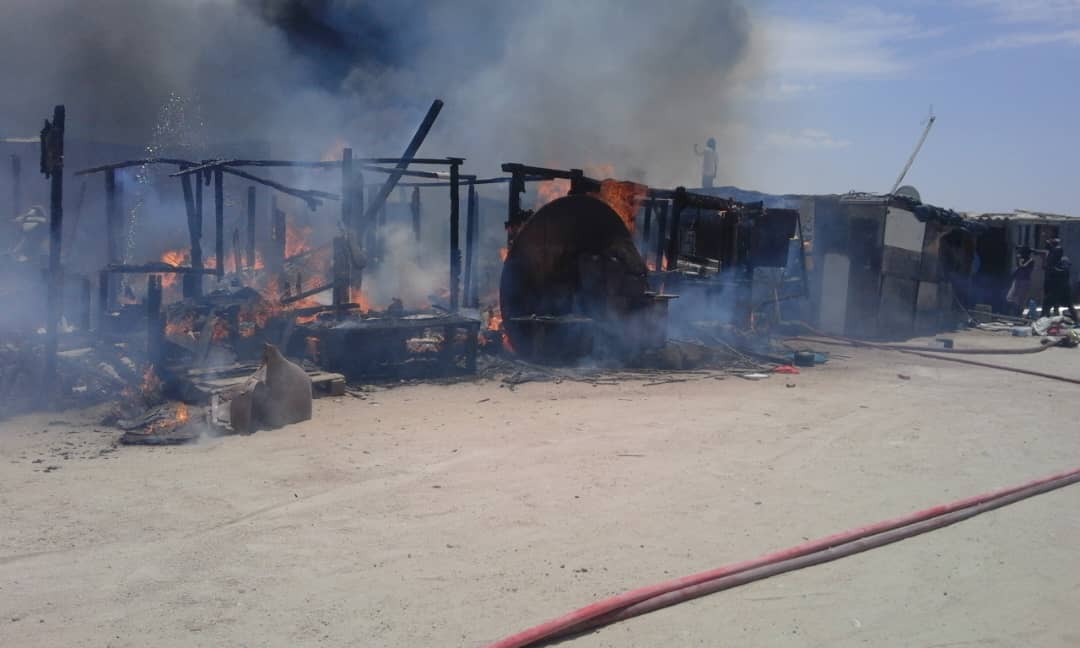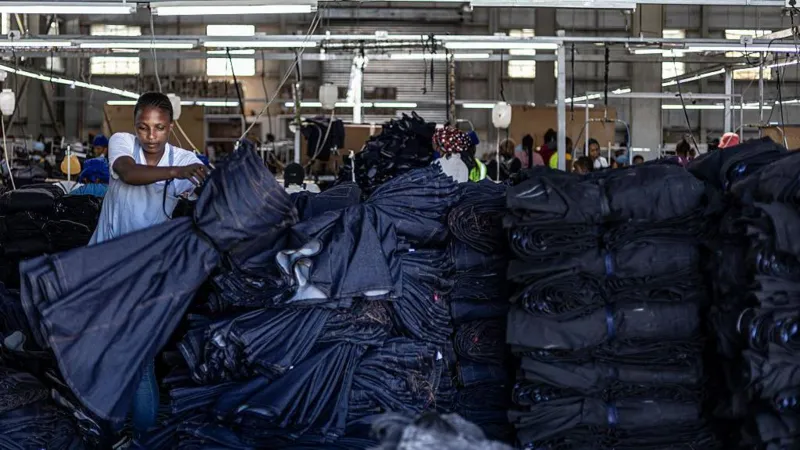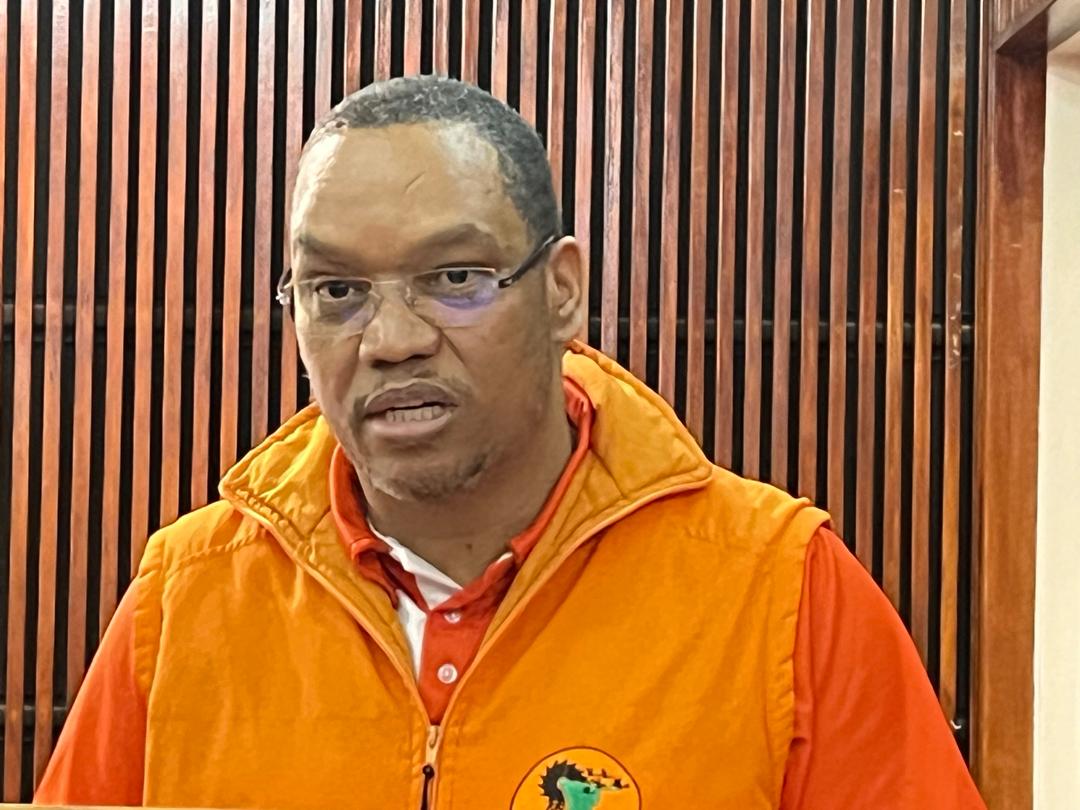IT’s a hot, depressing Friday afternoon at the Keetmanshoop State Hospital.
Just as The Namibian arrives at the entrance, two women get off a bakkie loaded with people. One carries a small brown coffin.A child passed away and must be buried tomorrow.In the foyer, a young man in his late twenties lies on a trolley.His eyes are lifeless as he stares in the direction of the reporter.HIV-AIDS has changed the lives of many residents of the southern town.Deaths have risen, the number of burials taking place each weekend are increasing.The municipality has just approved plans to build a fourth cemetery in the Tseiblaagte residential area.At the new cemetery, charges for adult graves will be increased from N$253 to N$260 while resting places for children will be N$240, up from N$220.Tseiblaagte is the worst affected part of Keetmanshoop.In the Kroenlein residential area and at the town cemetery the price of an adult grave is N$1 800 and N$1 150 for children.”But it is getting better,” says Dr Emmanuel Dumebi Adigwe, the principal medical officer at the hospital.”Since we started the anti-retroviral programme in September last year we have lost only eight patients.That is a fantastic figure,” he told The Namibian.He has reason to be pleased with the progress they have made since Government decided to roll out the long-awaited life prolonging drugs to regional hospitals such as Keetmanshoop.In less than six months, some 120 patients have enrolled with the programme at the southern town.The drugs are being dispensed free of charge.This figure excludes the number of pregnant women receiving Nevirapine to reduce mother-to-child transmission of the disease.”Many who joined the programme were severely sick.Without the ARVs they would not have survived a month.These are patients that came in dead but lived so long,” said Adigwe.The rollout to Keetmanshoop, Rundu, Katima Mulilo and Walvis Bay State Hospitals was introduced following a pilot programme at Katutura and Oshakati.The Keetmanshoop figures indicate the success of the programme.The town has a 16 per cent HIV prevalence rate.Residents blame the high infection rate on unemployment, which stands at 35 per cent, and accompanying social evils.Yet the Karas Region is rich in diamonds, zinc and other mineral resources while fish and red meat also contribute considerably to jobs in the region.Many residents claim that jobs go to people from other regions.Before the anti-retroviral programme was launched, only 157 patients countrywide were receiving the treatment.”It has reduced the number of visits and admissions of HIV-positive patients to the hospital dramatically,” said Adigwe.However, he was quick to point out that it could be better.For now, the staff are still adapting to the extensive counselling sessions and the strict guidelines for the administering of the drugs.”If the staff work closely with the patients and the clients are more willing to do voluntary counselling and testing, it will be much better.Right now, most of the people join the programme with one foot in the grave.We only try to resuscitate them and failed with the eight who died,” he said.Patients accepted for the programme – which is lifelong – must meet strict criteria, including being a Namibian, being resident at the same address for at least five months, having a reliable support system and access to proper nutrition.They must be committed to lifelong ARV therapy.The main ARV therapy being administered consists primarily of Stavutine, which is also known as D4T, and Lamivutine – better known as 3TC – as a first line of treatment.Deputy Minister of Health and Social Services Richard Kamwi has cited the complexity of the treatment, a shortage of doctors and the need for regular laboratory tests as reasons for excluding the treatment service from clinics at present.Namibia has an estimated 230 000 people infected with HIV, but not all are eligible for ARV therapy as treatment is dependent on the state of their immune system.One carries a small brown coffin.A child passed away and must be buried tomorrow.In the foyer, a young man in his late twenties lies on a trolley.His eyes are lifeless as he stares in the direction of the reporter.HIV-AIDS has changed the lives of many residents of the southern town.Deaths have risen, the number of burials taking place each weekend are increasing.The municipality has just approved plans to build a fourth cemetery in the Tseiblaagte residential area.At the new cemetery, charges for adult graves will be increased from N$253 to N$260 while resting places for children will be N$240, up from N$220.Tseiblaagte is the worst affected part of Keetmanshoop.In the Kroenlein residential area and at the town cemetery the price of an adult grave is N$1 800 and N$1 150 for children.”But it is getting better,” says Dr Emmanuel Dumebi Adigwe, the principal medical officer at the hospital.”Since we started the anti-retroviral programme in September last year we have lost only eight patients.That is a fantastic figure,” he told The Namibian.He has reason to be pleased with the progress they have made since Government decided to roll out the long-awaited life prolonging drugs to regional hospitals such as Keetmanshoop.In less than six months, some 120 patients have enrolled with the programme at the southern town.The drugs are being dispensed free of charge.This figure excludes the number of pregnant women receiving Nevirapine to reduce mother-to-child transmission of the disease.”Many who joined the programme were severely sick.Without the ARVs they would not have survived a month.These are patients that came in dead but lived so long,” said Adigwe.The rollout to Keetmanshoop, Rundu, Katima Mulilo and Walvis Bay State Hospitals was introduced following a pilot programme at Katutura and Oshakati.The Keetmanshoop figures indicate the success of the programme.The town has a 16 per cent HIV prevalence rate.Residents blame the high infection rate on unemployment, which stands at 35 per cent, and accompanying social evils.Yet the Karas Region is rich in diamonds, zinc and other mineral resources while fish and red meat also contribute considerably to jobs in the region.Many residents claim that jobs go to people from other regions.Before the anti-retroviral programme was launched, only 157 patients countrywide were receiving the treatment.”It has reduced the number of visits and admissions of HIV-positive patients to the hospital dramatically,” said Adigwe.However, he was quick to point out that it could be better.For now, the staff are still adapting to the extensive counselling sessions and the strict guidelines for the administering of the drugs.”If the staff work closely with the patients and the clients are more willing to do voluntary counselling and testing, it will be much better.Right now, most of the people join the programme with one foot in the grave.We only try to resuscitate them and failed with the eight who died,” he said.Patients accepted for the programme – which is lifelong – must meet strict criteria, including being a Namibian, being resident at the same address for at least five months, having a reliable support system and access to proper nutrition.They must be committed to lifelong ARV therapy.The main ARV therapy being administered consists primarily of Stavutine, which is also known as D4T, and Lamivutine – better known as 3TC – as a first line of treatment.Deputy Minister of Health and Social Services Richard Kamwi has cited the complexity of the treatment, a shortage of doctors and the need for regular laboratory tests as reasons for excluding the treatment service from clinics at present.Namibia has an estimated 230 000 people infected with HIV, but not all are eligible for ARV therapy as treatment is dependent on the state of their immune system.
Stay informed with The Namibian – your source for credible journalism. Get in-depth reporting and opinions for
only N$85 a month. Invest in journalism, invest in democracy –
Subscribe Now!










